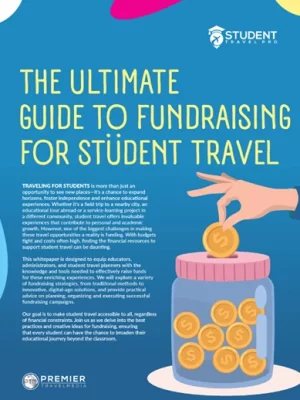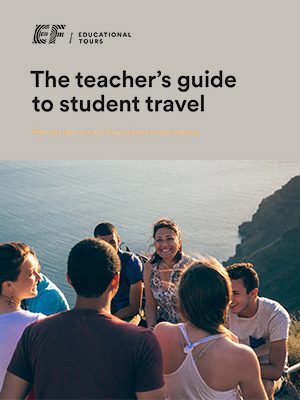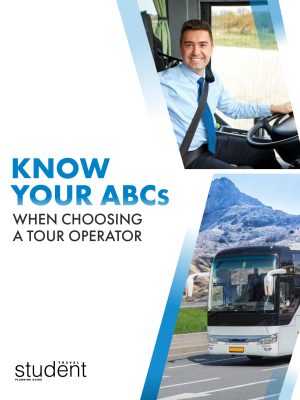Explore eco-conscious ways to craft disposable sack lunches and learn how these meals can make field trips more cost-effective
The unconventional nature of field trips often alters various aspects of the standard school day, including the type of lunch a student brings to school. Many utilize reusable lunch boxes regularly, but these containers can take up a lot of space when traveling together. You also run a higher risk of lunch boxes being lost or misplaced on learning excursions outside the classroom.
Enter the disposable sack lunch, a great alternative that is efficient in terms of cost and naturally benefits the organizational structure of a field trip. These lunches may not initially seem eco-friendly, but adhering to fundamental sustainability practices and selecting the right materials can make them waste-free. No matter if you’re an educator or organizer looking to plan practical meal guidelines, or a parent tasked with preparing that meal for your child. Here’s everything you need to convince you that disposable sack lunches are a great green match for a student’s next field trip.
Interested in discovering more field trip ideas? Get started today by subscribing for FREE to Student Travel Pro!
 What are Disposable Sack Lunches?
What are Disposable Sack Lunches?
While many students bring a reusable lunchbox, a disposable sack lunch is a one-time use meal. It consists of materials and contents that are completely discarded after eating, eliminating the need to carry anything once the meal is over. This option enables efficiency and ease during a school field trip, simplifying logistics for both students and adults.
When it comes to what you’ll typically find inside a sack lunch, common foods and drinks include:
- Sandwiches or wraps (preferably without mayonnaise and deli meat)
- Fruit and vegetables that travel well, including apples, oranges, pears, and veggie sticks
- Disposable drinks like juice boxes or recyclable water bottles
- Shelf-stable snacks such as pretzels, trail mix or granola bars
Reusable ice packs and thermoses aren’t ideal, so it’s simpler to avoid foods that require temperature regulation, such as meats and yogurts; the same applies to fruits that tend to decompose quickly, like bananas.
How to Make an Eco-Friendly Lunch
There are plenty of ways to pack disposable meals, but we want to highlight the most sustainable methods. Remember that eco-friendly lunches should minimize the production of unnecessary waste.
- A reusable ice pack can be replaced with a disposable version, but they can’t be recycled. You may want to consider forgoing any food that requires ice packs.
- A brown paper bag is your best option in place of a traditional lunchbox. Unlike grocery bags or resealable plastic bags, brown paper is a recyclable material.
- Looking inside the bag, you can further encourage sustainability by using recyclable sandwich bags instead of resealable plastic versions to keep all sorts of foods fresh. You can also find compostable food bags and biodegradable utensils, so it may be worth checking if your field trip location has any on-site compost bins.
- Wax paper or paper wrapping will keep food fresh while staying eco-friendly.

Cost-Effectiveness and Organizational Efficiency
From saving money to boosting productivity, disposable sack lunches are particularly well-suited to the unique circumstances of student field trips. Regarding cost-effectiveness, products like brown paper bags, sustainable sandwich bags, and recyclable water bottles can be easily purchased in bulk at affordable prices, leaving plenty left for the next field trip budget. This type of lunch also eliminates the need to stop at fast food restaurants, an alternative that can be more expensive than a healthier homemade lunch, while taking away precious time from the actual field trip. This financial security can reassure educators and parents about the practicality of disposable sack lunches.
Being time-efficient is key to making a field trip successful, as managing students outside of a structured classroom, combined with travel times, puts considerable pressure on teachers and volunteers to stay on schedule. Students aren’t usually given the same amount of time for lunch that they get in school, so the limited amount of food that a paper bag can carry works quite well.
Using lighter bags instead of bulkier lunch boxes also aids teachers and volunteers tasked with transporting these meals. It can still be challenging to carry a container full of disposable student lunches, but the more minimal packaging, combined with the fact that there won’t be anything to move after lunch, certainly eases the load. Even a fantastic field trip will have its share of confusion, so allowing the uncomplicated nature of disposable and environmentally friendly lunches will help make the day that much more straightforward.
 Further Considerations and Tips
Further Considerations and Tips
Here are a few more recommendations to ensure that your student’s meal is as sturdy and safe as possible.
- Double-check each piece of packaging to confirm that everything is sealed correctly. This can prevent messes from happening inside the bag, but can also stop food from spilling out and putting those with allergies at risk.
- On the topic of safety, consider these guidelines to ensure food is prepared in satisfactory conditions and understand why avoiding temperature-dependent foods is probably for the best when it comes to crafting eco-friendly disposable meals.
- Label everything to ensure food mishaps don’t occur
- Students will likely be using more energy during the day due to the active nature of field trips, so consider prioritizing healthy eating options and lots of hydration. Encouraging nutritious alternatives, such as opting for a water bottle instead of a juice box, helps keep students hydrated and promotes their overall health.
- Avoid foods that can cause messes. Crackers are a fine snack, but being tightly packed in a paper bag means they are far more likely to be crushed and fall apart. In general, choosing foods that can withstand some flattening while still inside the bag will cause far fewer problems come lunchtime.
Disposable Sack Lunches Perfectly Complement Student Field Trips
Using disposable sack lunches for field trips won’t disappoint. They cost little money and time to put together, are easily transported, fit into field trip scheduling norms, and are one less concern for both students and adults. Although not as inherently eco-friendly as a reusable lunch box, easily accessible packaging materials can quickly transform these meals into extremely environmentally sustainable ones.
If you’re still looking for more, make sure to claim your free subscription to Student Travel Pro!
By Ben Spielman, Contributing Writer
All photos courtesy of Freepik.










